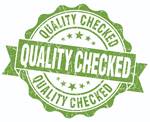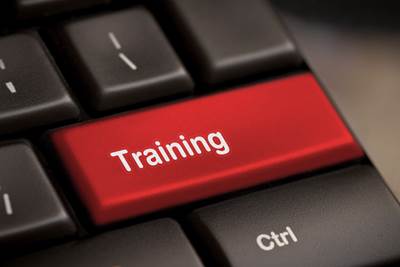How to Transfer Quality Training from a Cost Center to a Profit Center
To succeed with product quality and quality training shops must measure quality at the source, process improvements, waste, cost, productivity, sales and other key performance indicators.

Today’s mold builders and molders innovated quickly to adapt to demands brought on by the COVID-19. Business intelligence and metrics are playing a vital role in providing the necessary insights to find new ways to improve product and service quality, drive greater value and responsiveness, increase efficiency of shop floor resources and proliferate quality throughout the organization.
Real-time monitoring is one way to help improve manufacturing performance from the shop floor to the top floor. Improving the quality of decisions yields greater revenue earned from higher levels of compliance, manufacturing quality and happy customers.
Historically, quality has been a tactical compliance function. Essentially, a policing organization and cost center for businesses. Today, savvy shops understand that quality is a strategic business initiative and a catalyst to profitability. In order to transform quality into a strategic profit center powering continuous improvement and drives competitive differentiation, shops need a better understanding of how to prioritize and measure achievable projects that will generate significant win, as well as optimal approaches to quality and automation to accelerate ROI.
Real-time data is one of the most powerful catalysts enabling greater manufacturing growth.
For examples, pick achievable projects that will generate high-impact wins, measure the impact and ROI of your quality initiatives; share results with senior management and the rest of the organization; shift the perception of quality within your shop from a policing center to a drive of strategic quality improvements that deliver ROI, leverage success to justify future quality investments; develop best-in-class training; and, consider manufacturing intelligence that provides new data-driven insights, often in real-time, yielding a roadmap and guidance to achieving goals.
Quality management is the act of overseeing all activities and tasks that must be accomplished to maintain a desired level of excellence. This includes the determination of a quality policy, creating and implementing quality planning and assurance, and quality control and quality improvement.
Quality management ensures that an organization, product or service is consistent using four main components: quality planning, quality assurance, quality control and quality improvement. Quality management is focused not only on product and service quality, but also on the means to achieve it.
Principles of Quality Costs is a tool to help shops sell the benefits of quality improvements initiatives to management. In addition, information on the use of quality costs in team-based problem-solving, customer satisfaction and its impact on sales revenue, and how quality costs are treated in across various industries is also offered.
All of this serves as the groundwork for a plan of action to get leadership on board and address the startling figures relating to the cost of poor quality. What is your next step? Start looking at your own processes with quality principles in mind and think about all the ways total quality management [both soft and hard skills] can bring positive change to your organization.
About the Author
Lewis Yasenchak, MBA, BS, is the founder and owner of P&Y Management Resources, specializing in building and improving the plastics industry supply chain.
Related Content
Machine Hammer Peening Automates Mold Polishing
A polishing automation solution eliminates hand work, accelerates milling operations and controls surface geometries.
Read MoreDynamic Tool Corporation – Creating the Team to Move Moldmaking Into the Future
For 40+ years, Dynamic Tool Corp. has offered precision tooling, emphasizing education, mentoring and innovation. The company is committed to excellence, integrity, safety and customer service, as well as inspiring growth and quality in manufacturing.
Read MoreMaking Mentoring Work | MMT Chat Part 2
Three of the TK Mold and Engineering team in Romeo, Michigan join me for Part 2 of this MMT Chat on mentorship by sharing how the AMBA’s Meet a Mentor Program works, lessons learned (and applied) and the way your shop can join this effort.
Read MoreMaking Quick and Easy Kaizen Work for Your Shop
Within each person is unlimited creative potential to improve shop operations.
Read MoreRead Next
Top 10 Topics to Cover During an ISO 9001 Manufacturing Audit
Take a look at this practical hands-on approach to conducting a quality audit.
Read MoreFour Benefits of Improved Employee Training for MoldMakers and Molders
Industry “know-how” and attention to everyone’s development can mean big profits for your business.
Read MoreReasons to Use Fiber Lasers for Mold Cleaning
Fiber lasers offer a simplicity, speed, control and portability, minimizing mold cleaning risks.
Read More





















